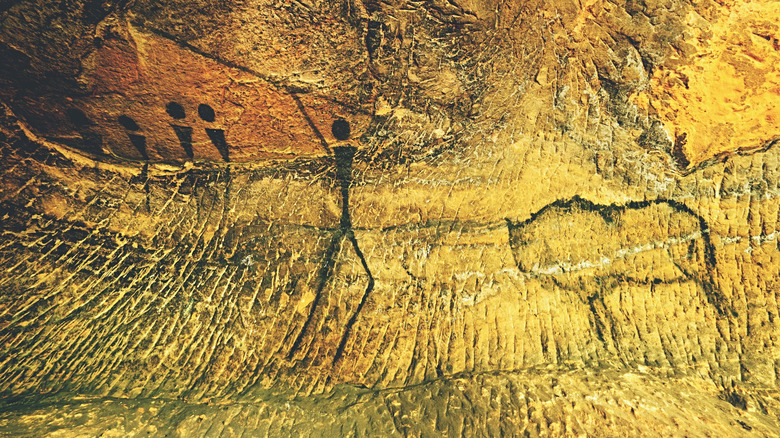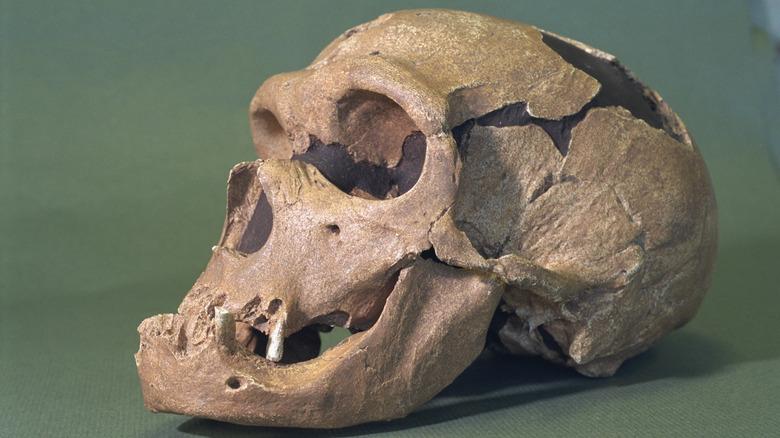Did Neanderthals Have Weapons?
There are many conflicting ideas about the people we call the Neanderthals, the species of humans that proliferated throughout the world around the same time homo sapiens — i.e., us — arrived about 300,000 years ago. Stereotypically portrayed in popular culture and even science reporting as unintelligent when compared to species that evolved later, Neanderthals could be considered the archetype of the typical cartoon caveman. However, research reveals they were advanced, with knowledge of fire and cooperative social behavior.
The fossil record suggests that the Neanderthals evolved in Eurasia and eventually became extinct around 40,000 years ago, when homo sapiens migrated from Africa to become the dominant humanoid species. But the truth is that the dominance of homo sapiens wasn't such a cut-and-dried thing. Indeed, many modern humans still carry traces of the Neanderthal genome, which is evidence of interbreeding between species and suggests that Neanderthals and homo sapiens weren't so different after all. The traditional thinking suggests that Neanderthals were inferior in terms of their use of tools — an aspect of their downfall. Yet new discoveries reveal that the species may have been using sophisticated tools, including deadly weapons with specially-designed tips, much earlier than we thought.
The bone-tipped spears of the Neanderthals
Archaeologists have long been aware of the Neanderthals' use of basic weapons. Research has shown that the species had mastered the art of making and using wooden spears up to 300,000 years ago. That means they were adept at using tools for the majority of their existence, which would have been crucial for hunting large animals and defending themselves against predators and other early humans.
And recent research suggests that Neanderthals were using more than just pointed sticks. According to samples discovered in North Caucasus caves, Neanderthals may have been adept at fabricating spears tipped with bone around 80,000 years ago, revealing previously unknown levels of craftsmanship. Before this discovery, experts believed that Neanderthals had only learned such skills from homo sapiens around 40,000 years ago. This finding seems to suggest that they had been capable of their own innovations when it came to weapons.
Questions remain, however, as to how Neanderthals may have used their weapons, with researchers keen to note that the bone-tipped spears that have recently been unearthed appear too weak to be used for hunting. Even the wooden versions remain something of a mystery, as it has long been assumed that they were used for short-range attacks. But in 2015, researchers held a special sports event in which professional javelin throwers were employed to hurl replicas of Neanderthal spears at distant hay bales to see if the early humanoids might have been adept at attacking prey from a distance. The results were inconclusive.
Battles between Neanderthals and homo sapiens — did they happen?
The exact reason Neanderthals went extinct 40,000 years ago is still a topic of much debate among anthropologists, though it is assumed their demise came around the time that homo sapiens, our ancestors, left Africa and began to proliferate around the world. Which begs the question: Was there a war between Neanderthals and homo sapiens that saw the former species face irreversible decline?
Aggression between the two species is highly likely. As experts note, other primate species to which we are closely related, such as chimpanzees, routinely take part in territorial battles using cooperative aggression in a manner that resembles warfare, and early humans were likely no different. When their weapons were not being used for hunting, they would likely have been employed to attack and defend against other humans, either those of the same species or different evolutionary strands. Indeed, both the remains of Neanderthals and early homo sapiens show evidence of trauma injuries to the skull suggesting the use of clubs, while evidence of primitive fortresses have also been uncovered, suggesting humanity has always taken part in warfare.


